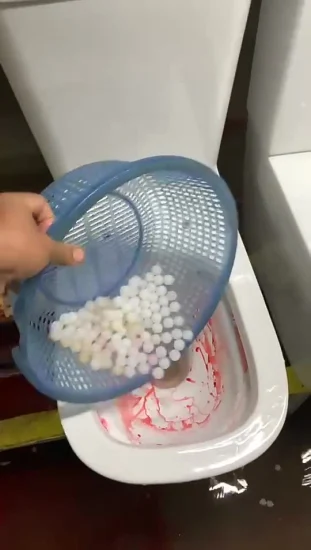Is it Allowed to Flush Food in the Toilet?
Is it Allowed to Flush Food in the Toilet?
Blog Article
Any individual has his or her own piece of advice in relation to Think Twice Before Flushing Food Down Your Toilet.

Intro
Many individuals are often faced with the problem of what to do with food waste, specifically when it pertains to leftovers or scraps. One common concern that emerges is whether it's fine to purge food down the bathroom. In this short article, we'll explore the reasons that people could consider purging food, the repercussions of doing so, and alternate techniques for correct disposal.
Reasons that individuals might take into consideration flushing food
Lack of recognition
Some people may not know the potential damage caused by flushing food down the commode. They might erroneously think that it's a harmless technique.
Convenience
Purging food down the commode might feel like a quick and easy remedy to disposing of unwanted scraps, specifically when there's no neighboring garbage can readily available.
Idleness
Sometimes, people might simply choose to flush food out of sheer laziness, without taking into consideration the effects of their activities.
Effects of flushing food down the toilet
Environmental effect
Food waste that winds up in waterways can add to contamination and harm marine ecological communities. Furthermore, the water used to flush food can strain water resources.
Plumbing concerns
Purging food can cause clogged up pipes and drains, creating expensive pipes repair services and inconveniences.
Kinds of food that need to not be flushed
Coarse foods
Foods with coarse textures such as celery or corn husks can obtain tangled in pipes and trigger blockages.
Starchy foods
Starchy foods like pasta and rice can absorb water and swell, bring about blockages in pipelines.
Oils and fats
Greasy foods like bacon or food preparation oils need to never be flushed down the commode as they can strengthen and create blockages.
Appropriate disposal techniques for food waste
Utilizing a waste disposal unit
For homes outfitted with waste disposal unit, food scraps can be ground up and flushed through the plumbing system. However, not all foods are suitable for disposal in this fashion.
Recycling
Certain food product packaging products can be reused, decreasing waste and reducing environmental impact.
Composting
Composting is a green method to get rid of food waste. Organic products can be composted and utilized to enhance dirt for gardening.
The importance of correct waste monitoring
Reducing ecological harm
Appropriate waste monitoring methods, such as composting and recycling, assistance reduce contamination and preserve natural deposits for future generations.
Shielding pipes systems
By staying clear of the technique of flushing food down the commode, house owners can stop expensive pipes repairs and maintain the stability of their pipes systems.
Final thought
Finally, while it may be alluring to purge food down the toilet for convenience, it is essential to recognize the potential repercussions of this action. By adopting appropriate waste management methods and throwing away food waste sensibly, individuals can add to much healthier plumbing systems and a cleaner environment for all.
THINK TWICE BEFORE FLUSHING FOOD DOWN YOUR TOILET IN FALLBROOK CA
Let’s be honest, we’re really supposed to be tossing rotten or leftover food in the compost bin or trash can. But many people like to place scraps of food down the drain of, say, their kitchen sink. That’s why the garbage disposal was invented: so we can continue to place certain foods down the drain without clogging our drain in the process. Smart.
But not all of us have the luxury of having a garbage disposal installed. So, you might continue to shove food down your sink drain anyway – or worse: you might flush them down your toilet! If you’re guilty of doing the latter, you’re going to want to stop, and here’s why:
Toilet Drains Aren’t Designed to Handle Food!
There’s your answer: food just doesn’t belong in your toilet. It may seem like your toilet drain is wider than the drains of your sinks, but truth be told, that isn’t actually the case. The narrower pipes of your toilet leave your plumbing at risk for clogging if you do happen to flush your food. In addition, food doesn’t break down as quickly that toilet paper and human waste do. In turn, this leaves your toilet at risk for a nasty clog.
Although a flush of a tiny pinch of food every now and then isn’t going to completely damage your toilet, there are certain foods that should absolutely not be flushed in your toilet at all. These include starchy foods like mashed potatoes, grains, hard pieces of food that are slow to break down, and fats and oils.
The latter categories of food are particularly problematic as they may harden, expand as they absorb water, break down slowly in your system, or generally create the perfect obstruction with their gelatinous composition. These are all things you don’t want in your plumbing system!
Experiencing a Toilet Clog?
Nobody’s perfect, and we all make mistakes. Sometimes one of the mistakes people make is flushing food down their toilet and later realizing that it wasn’t the best thing to do once they see that their toilet is now clogged. Uh-oh!

I am very eager about Is it safe to flush food (especially rice) down the toilet? and I hope you enjoyed my blog entry. Sharing is nice. Helping others is fun. Thank you for being here. Don't hesitate to come by our website back soon.
Call Today Report this page